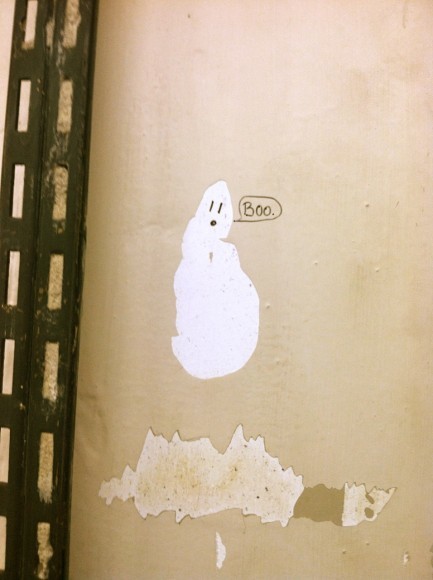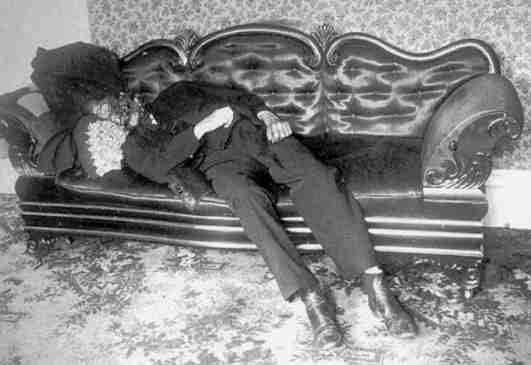
Just the thought of a person murdering in cold blood and getting away with it can send chills to the very innards of your soul. The victims, unavenged, and the killer still at large, ready to terrorize at a moment's notice, is simply frightening.
The murder mysteries on this list are some of the most brutal killings in history and have yet to be solved. What are the most famous unsolved murder cases? This list has them all.
In some of these cases, people were charged with murder only to be acquitted from a lack of evidence. In others, police didn't have any suspects or couldn't identify the victim.
This list features the most famous unsolved murders from all over the world, as well as unique information about each victim and any suspects who were named.
The Most Famous Unsolved Murders,
Amber Hagerman
Amber Rene Hagerman was nine years old when she was abducted and murdered while riding her bicycle in an abandoned grocery store parking lot near to her grandparents' home in Arlington, Texas on January 13, 1996. No suspects were ever identified. Police responded to the area after an anonymous 911 call, claiming that a child was screaming and a man in a truck was kidnapping her.
Four days after her abduction, Amber’s body was found with her throat cut in a drainage ditch. Police never released whether there was any evidence of sexual assault.
In the past few years, a witness finally stepped forward, claiming to have seen the abduction. He told police he saw a man in a black truck, grabbed Amber from her bike and threw her into the truck, and sped away.
While Amber’s killer has yet to be caught, her legacy remains as her murder led to the development of the AMBER Alert system. The system has helped save over 500 abducted or missing children since its inception in the U.S. and several foreign countries.
Bob Crane
1960s sitcom star Bob Crane from "Hogan’s Heroes" was discovered in his apartment in 1978 in Scottsdale, Arizona after he had been bludgeoned to death in his bed with a camera tripod. The beating was so brutal that police could hardly recognize him.
The main suspect, John Carpenter, was a friend of Crane's who spent a lot of time together, going to strip clubs and geeking out on video equipment. There was no weapon or witnesses to the murder, making it difficult to make any formal accusations.
The case was reopened in 1990 after an overlooked photo of human body tissue was found in Carpenter's car resurfaced. Carpenter was arrested and tried for first-degree murder, but the case was later acquitted after evidence was found inconclusive.
Georgette Bauerdorf
Georgette Bauerdorf, a well-known heiress to an oil fortune, was 20 years old when she was murdered in her home in Los Angeles in 1944. It is believed that a man was lying in wait for her in her apartment. Police found fingerprints on an automatic nightlight bulb the man unscrewed outside her apartment building just enough so it wouldn't turn on to prevent any witnesses from seeing him.
Her body was discovered face down in a bathtub after being strangled with a piece towel shoved down her throat and none of her valuables were taken.
Some link her death with the Black Dahlia's, saying the killer was the same person as Bauerdorf and Short had some similarities in their deaths, as well as frequenting the same places in Hollywood. However, there was insufficient evidence to ever convict anyone of the crime.
Boy in the Box
The Boy in the Box was a murder victim who was found in 1957 in wrapped up in a blanket inside of a bassinet, which was inside a cardboard box in a field near a Philadelphia country road. The boy was probably between 4 and 6 years old and had been bludgeoned to death. The box was from a JC Penny store just 15 miles away from the field where the it was found, but detectives couldn't trace down the purchasers as the store typically dealt with cash.
Neither the blanket nor the boy could provide any additional information about the death. No one could even figure out when the boy died.

In 2002, a witness stepped forward, saying her parents were the murderers of the boy. Though her story was detailed and consistent, there's no hard evidence to back it up.
The Grimes sisters
Barbara and Patricia Grimes were sisters who lived in Chicago, Illinois. They were ages 13 and 15 when they disappeared in December 1956 after leaving to watch a movie. Their bodies were found on January 10, 1957 on a rural Chicago road, frozen and naked. Several suspects were interview and investigated, but no charges were filed.

In 2010, a retired police officer reignited his interested in the case and began investigating again. One witness came forward, saying she was with the Grimes sisters the night they disappeared but had previously been too afraid to come forward.
Betsy Aardsma
Betsy Aardsma, a 22-year-old student from Penn State University, was stabbed in the late afternoon on November 29, 1969 while studying in the library. She was dead by the time she reached the hospital. No suspects have ever been identified, and since her death, rumors have spread about the aisle in which she was stabbed in the library to be haunted.
This is where she was stabbed:

The Axeman of New Orleans
The Axeman of New Orleans was a well-known serial killer who broke into several homes by breaking down his victims' doors with an axe. The murders took place between 1918 and 1919, and no evidence was ever strong enough to arrest anyone. The axeman taunted the city with his crimes, even writing letters to local newspapers in which he claimed to be a demon from hell. Twelve identified victims were found.
The Axeman would come in the night, chisel a panel out of the back door, and behead and dismember his victims in their sleep. What confused police the most was this ritual and if it was the murderer's signature or his MO.
A series of the same murders took place in Texas and Louisiana in 1911, with 49 victims being murdered. The killer left a note for police one night saying, "When He maketh the inquisition for blood, He forgetteth not the cry of the humble, human five."
A rumor was spread that perhaps the serial killer was a man named Joseph Momfre, who was eventually murdered by the widow of one of the victims. A ringleader for blackmailers in the New Orleans mob, Momfre was imprisoned in 1911 shortly after the first set of murders ended and released in 1918 just before they began again. There is little evidence thought that supports Momfre as the actual killer.
The Black Dahlia
Los Angeles's most famous murder, The Black Dahlia refers to Elizabeth Short, who was murdered in 1947. Her body was discovered in a park in Los Angeles and her death has been publicized repeatedly, mostly because of how particularly gruesome the murder was. Her body was found, nude, posed, mutilated, and sliced in half at the waist. She had been completely drained of blood and scrubbed clean.

In 2013, the case made headlines again when police did an extensive search of Dr. George Hill Hodel's house (one of the main suspects), where incriminating evidence of human body decomposition had been found before. Soil samples from the house were taken in to be tested.
A conversation was also recorded between Hodel and an unknown person when Hodel said, "Supposin' I did kill the Black Dahlia. They couldn't prove it now. They can't talk to my secretary because she's dead." The craziest part? Hodel's son, Steve Hodel, was the police officer in charge of the case and is convinced is father is the one who killed Elizabeth Short. He also believes his father killed an additional dozen women throughout the L.A. area.
Andrew and Abby Borden
On August 4, 1892 Andrew and Abby were found brutally murdered in their home with a hatchet in Fall River, Massachusetts.
Her father was found with 11 hacks in his face, his stepmother had 19 to the back of her head. Both were hacked to bloodied pulps. The first blow on both of them was so forceful that it surely killed them both immediately.
WARNING: GRAPHIC PHOTOS BELOW


Lizzie was suspected immediately, as the town knew of the hateful rift between her and her stepmother. Additionally, during the week of the trial, Lizzie burned a dress that she claimed had paint on it, but prosecutors alleged that it was covered in blood and she burned it to cover up the murder. She was acquitted of all charges, the case was found inconclusive. She didn't even though she was treated as an outcast for the rest of her life. She died in 1927 and no other suspects were charged.
The Hall-Mills Murder
The bodies of Reverend Edward Wheeler Hall and Eleanor Mills were discovered in 1922 in New Jersey under a crab apple tree. Their bodies were carefully posed, laying side by side with their feet point towards the tree. Hall had died from a single shot to the head, but Mills had been shot three times, with her tongue and larynx cut out, with a slash going ear to ear. Hall's hand was under Mills's neck, and Mills's hand was on his knee.
Explicit love letters the two had written to each other were found torn up and surrounding the bodies, suggesting that their love affair was the motivation for their murders. Mills was married to the church janitor and was known for being Hall's lover.
The main suspect was Hall's wife, Frances Stevens Hall, who the reverend had married for money, as she was the heiress of a family fortune.
Jane Gibson, a hog farmer who lived close to the crime scene became the star witness of the case. She said on September 14, 1922, she saw someone walking in her cornfield. She got on her horse to confront the person, who she thought was a thief, until she found a car and heard a couple arguing. She said the woman had white hair, just like Frances Steven Halls. She then yelled, "Explain these letters!" There were gunshots, screaming, and another woman's voice that yelled, "Henry!" Scared, Gibson rode off.

The crime scene was a complete disaster; people trampled all over it, pulling bark from the tree under which the bodies laid, and souvenirs were taken. It was also improperly treated by police and no autopsies were performed. Family members were named suspects and Hall’s brother-in-law’s fingerprints were identified four years later. All were acquitted of any charges.
Some believe Gibson to be the killer. Others believe that Halls was a member of the Ku Klux Klan and had broken a moral code, as some of the characteristics of the murder resembled their killing signatures.